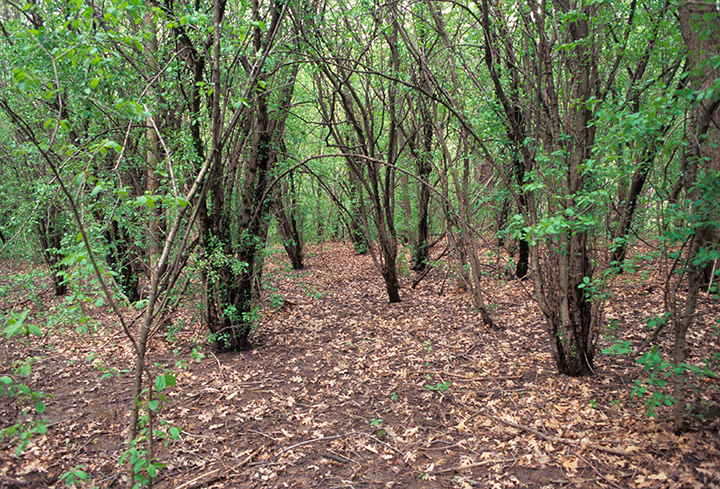Crews battle buckthorn for health of our woods


Photo: Jim Steffen, my.chicagobotanic.org
By Eric Chien
Look into the woods this time of year. Not at the fall canopy or at the ground sprinkled with drops from the great reservoir of color above. Don’t look for the ghostly brown of bounding deer readying themselves for guns in the woods. Don’t look for the swooping boughs of balsam fir whose aroma fast forwards us all to the coming holidays. Ignore the soft tamarack needles that make no effort to hide the appearance of having stolen all of the gold from Fort Knox. Look into the space between the beauty. It is here where you’ll find how much people care about these woods.
Buckthorn burns green in the fall forest. Amid the entire splendor of a changing season, this invasive tree-shrub holds tightly to its summer colors. Mature trees form a gnarled, branching trunk that reaches a story or two high, branches dripping with deep purple berries. At its worst, a buckthorn invasion is characterized by numerous large trees whose canopies mingle with several years of their progeny, forming a dense tangle of leaves and thorns all the way to the forest floor. While large oaks, pines and maples might persist above, nothing grows below the buckthorn except its kin. When the invasion has reached this stage it is a juggernaut. Wrest some land free from buckthorn and thousands of patient buckthorn seeds burst forth. Expect this response for years to come. As long as buckthorn has a hold of the woods, there will be no young native trees. And when the old guard falls, so does the forest.
For the past two months, Conservation Corps crews have been working tirelessly to take back some of our woods. Every year crews put steel and chemical to wood for weeks, hoping to revive our state’s most iconic landscape from a buckthorn coma. We make gains in the places we work, but simultaneously the woods continue to take substantial losses in new places. We are painfully aware of that. Pair the immense physical difficulty of removing buckthorn with the tempting excuse of inevitable loss, and it is easy to see why buckthorn season breaks the spirit of so many crews. Corps crews are most often set to work in woods that are at the final stages of buckthorn invasion, when success is at its most costly and most bleak. Our skills lend us to that task, and we seek to rise to the occasion. Yet, as with any form of health, an ounce of prevention goes farther than a ton of treatment. A child, with some basic plant ID and a pair of loppers and gloves could save five acres of forest in a day. Five years down the road, it would take a six-person Corps crew a full week and hundreds of dollars in chemical to do the same. It is time to take that old doctor’s quip seriously.
Wendell Berry – agrarian advocate, poet and writer – once claimed that to determine the character of a person we need only look at the land over which they hold ownership. The condition of the land betrays the morality, discipline and holistic health of the person. Rarely is reality as simple as that, but I’ve come to find a grain of truth in Berry’s claim. I know of healthy woods. They are not remote or buffered, but are islands of native forest amidst a landscape stricken with buckthorn. Buckthorn-free forest is hard fought and hard won. Its stewards are among the hardest working, engaged and compassionate people I know. Let us seek to emulate their example, and to manifest our true selves in the health of our woods.